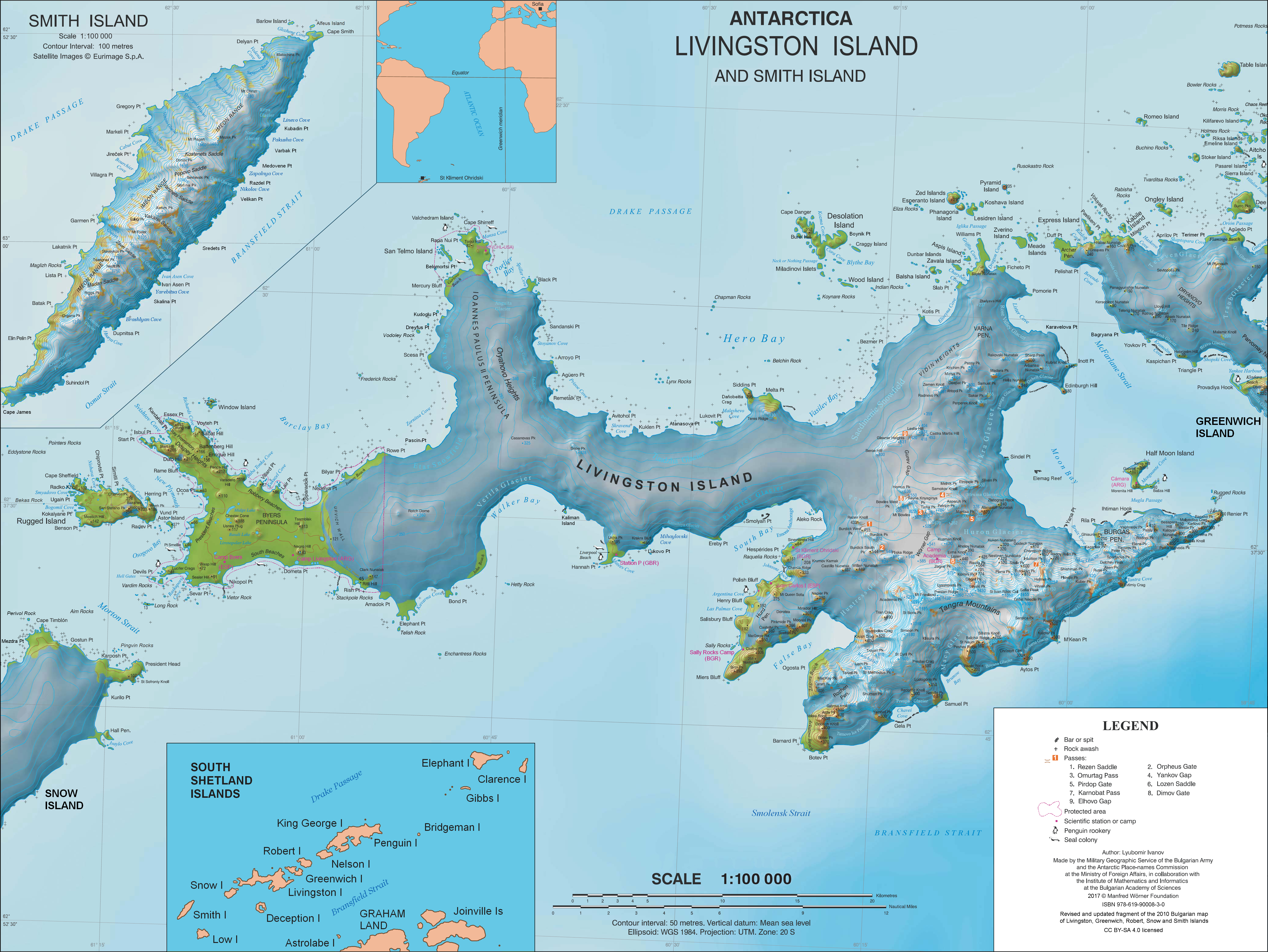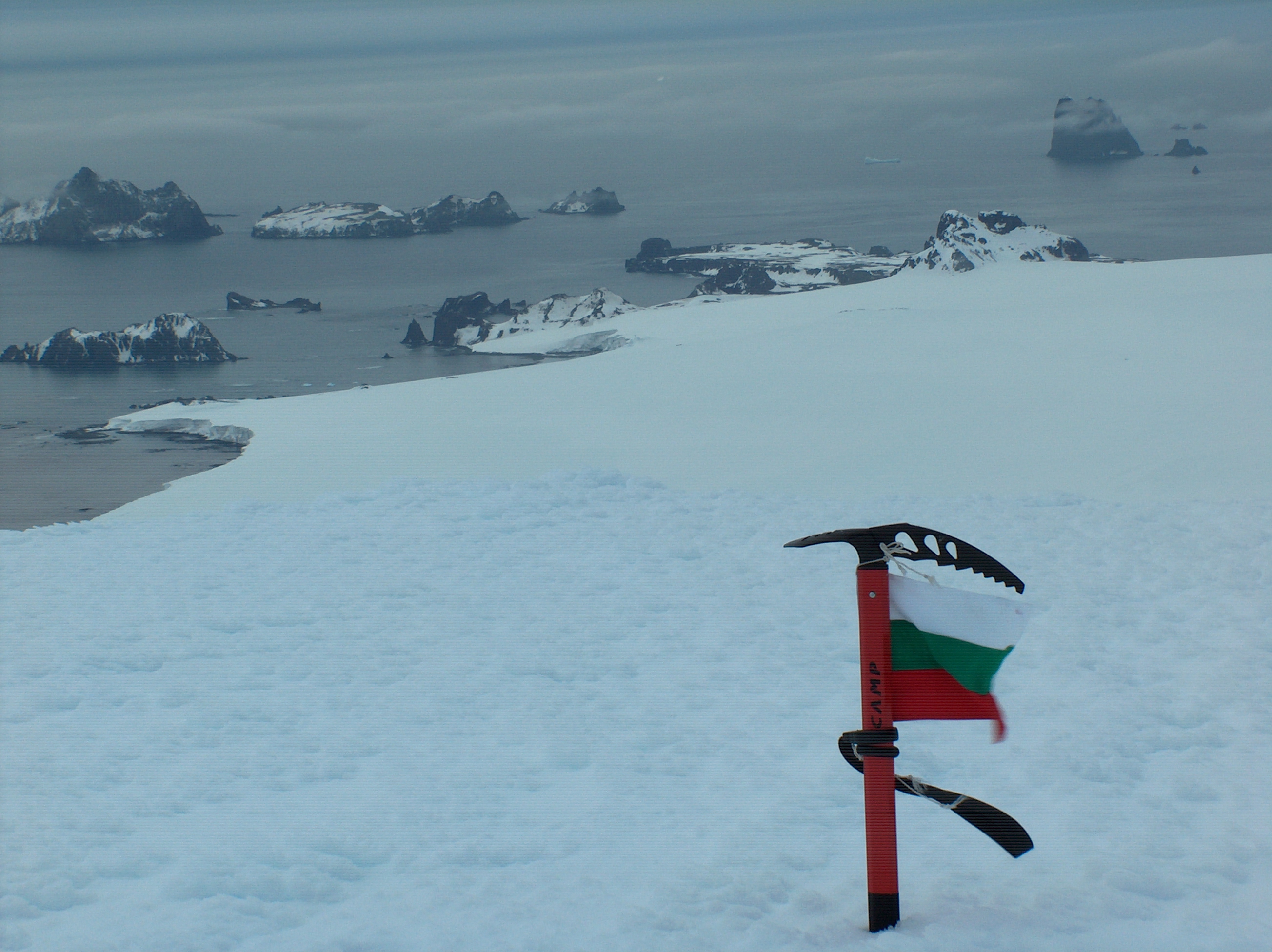|
Inept Cove
Inepta Cove () is a cove on the northwest side of Rozhen Peninsula, part of False Bay, Livingston Island in the South Shetland Islands, Antarctica. The feature's configuration has changed markedly, and it has eventually disappeared as a result of the retreat of Huntress Glacier during the last decade of the 20th century and the first decade of the 21st century.L.L. Ivanov. Antarctica: Livingston Island and Smith Island. Scale 1:100000 topographic map. Manfred Wörner Foundation, 2017. (The local coastline in 2017, Inepta Cove no longer existing) The feature was named "Caleta Inepta" (unapt cove) on a 1954 Argentine navy chart, which reflects the inadequacy of the cove as an anchorage. This name has been approved with an English generic term. Maps * L.L. Ivanov et al. Antarctica: Livingston Island and Greenwich Island, South Shetland Islands (from English Strait to Morton Strait, with illustrations and ice-cover distribution). Scale 1:100000 topographic map. Sofia: Antarctic ... [...More Info...] [...Related Items...] OR: [Wikipedia] [Google] [Baidu] |
Cove
A cove is a small bay or coastal inlet. They usually have narrow, restricted entrances, are often circular or oval, and are often situated within a larger bay. Small, narrow, sheltered bays, inlets, creek (tidal), creeks, or recesses in a coast are often considered coves. Colloquially, the term can be used to describe a sheltered bay. Geomorphology describes coves as precipitously walled and rounded cirque-like openings like a valley extending into or down a mountainside, or in a hollow or nook of a cliff or steep mountainside. A cove can also refer to a corner, nook, or cranny, either in a river, road, or wall, especially where the wall meets the floor. Formation Coves are formed by differential erosion, which occurs when softer rocks are worn away faster than the harder rocks surrounding them. These rocks further erode to form a circular bay with a narrow entrance, called a ''cove''. Another way is that waves can transport rocks and sediment towards cliffs or rock faces, whic ... [...More Info...] [...Related Items...] OR: [Wikipedia] [Google] [Baidu] |
Rozhen Peninsula
Rozhen Peninsula (, ) extends 9 km in the southwest direction towards Barnard Point, Livingston Island in the South Shetland Islands, Antarctica, and 8.8 km wide. It is bounded by False Bay and its segment Inept Cove to the west, Bransfield Strait to the southeast and Brunow Bay to the east. Its interior is occupied by the Friesland Ridge of Tangra Mountains. The peninsula is named after Rozhen site in Pirin Mountain, Bulgaria. Location The peninsula is centered at (UK Directorate of Overseas Surveys mapping in 1968, partial Spanish mapping by the Servicio Geográfico del Ejército in 1991, and Bulgarian mapping in 2005 and 2009 from topographic surveys in 1995/96 and Tangra 2004/05). See also * Friesland Ridge * Livingston Island Maps * L.L. Ivanov et al. Antarctica: Livingston Island and Greenwich Island, South Shetland Islands. Scale 1:100000 topographic map. Sofia: Antarctic Place-names Commission of Bulgaria, 2005. * L.L. Ivanov. Antarctica: Livingston I ... [...More Info...] [...Related Items...] OR: [Wikipedia] [Google] [Baidu] |
False Bay (Livingston Island)
False Bay () is a bay long, which lies between Barnard Point and Miers Bluff on the south side of Livingston Island, in the South Shetland Islands, Antarctica. The glaciers Hurd Ice Cap, Huntress, Ruen Icefall, Peshtera and Charity feed the bay. It was probably first entered and charted by Captain Nathaniel Palmer Nathaniel Brown Palmer (August 8, 1799 – June 21, 1877) was an American seal hunter, explorer, sailing captain, ship designer, and a whale hunter. He gave his name to Palmer Land, Antarctica, which he explored in 1820 on his sloop ''Hero''. ... in November 1820, and was likely named because of the possibility in thick weather of confusion between this feature and nearby South Bay, where Johnsons Dock was frequented by the early sealers. Maps Chart of South Shetland including Coronation Island, &c.from the exploration of the sloop Dove in the years 1821 and 1822 by George Powell Commander of the same. Scale ca. 1:200000. London: Laurie, 1822 South Shetlan ... [...More Info...] [...Related Items...] OR: [Wikipedia] [Google] [Baidu] |
Livingston Island
Livingston Island (Russian name ''Smolensk'', ) is an Antarctic island in the Southern Ocean, part of the South Shetland Islands, South Shetlands Archipelago, a group of List of Antarctic and subantarctic islands, Antarctic islands north of the Antarctic Peninsula. It was the first land discovered south of 60° south latitude in 1819, a historic event that marked the end of a centuries-long pursuit of the mythical Terra Australis, ''Terra Australis Incognita'' and the beginning of the exploration and utilization of real Antarctica. The name Livingston, although of unknown derivation, has been well established in international usage since the early 1820s. Geography Livingston Island is situated in West Antarctica, northwest of Cape Roquemaurel on the Antarctic mainland, south-southeast of Cape Horn in South America, southeast of the Diego Ramírez Islands (the southernmost land of South America), due south of the Falkland Islands, southwest of South Georgia Islands, and fr ... [...More Info...] [...Related Items...] OR: [Wikipedia] [Google] [Baidu] |
South Shetland Islands
The South Shetland Islands are a group of List of Antarctic and subantarctic islands, Antarctic islands located in the Drake Passage with a total area of . They lie about north of the Antarctic Peninsula, and between southwest of the nearest point of the South Orkney Islands. By the Antarctic Treaty System, Antarctic Treaty of 1959, the islands' sovereignty is neither recognized nor disputed by the signatories. According to British government language on the topic, "the whole of Antarctica is protected in the interests of peace and science." The islands have been claimed by three countries, beginning with the United Kingdom since 1908 (since 1962 as part of the equally unrecognized British Antarctic Territory). The islands are also claimed by the governments of Chile (since 1940, as part of the Antártica Chilena province), and by Argentina (since 1943, as part of Argentine Antarctica, Tierra del Fuego Province, Argentina, Tierra del Fuego Province). Several countries ... [...More Info...] [...Related Items...] OR: [Wikipedia] [Google] [Baidu] |
Antarctica
Antarctica () is Earth's southernmost and least-populated continent. Situated almost entirely south of the Antarctic Circle and surrounded by the Southern Ocean (also known as the Antarctic Ocean), it contains the geographic South Pole. Antarctica is the fifth-largest continent, being about 40% larger than Europe, and has an area of . Most of Antarctica is covered by the Antarctic ice sheet, with an average thickness of . Antarctica is, on average, the coldest, driest, and windiest of the continents, and it has the highest average elevation. It is mainly a polar desert, with annual Climate of Antarctica#Precipitation, precipitation of over along the coast and far less inland. About 70% of the world's freshwater reserves are frozen in Antarctica, which, if melted, would raise global sea levels by almost . Antarctica holds the record for the Lowest temperature recorded on Earth, lowest measured temperature on Earth, . The coastal regions can reach temperatures over in the ... [...More Info...] [...Related Items...] OR: [Wikipedia] [Google] [Baidu] |
Huntress Glacier
Huntress Glacier is a glacier long and wide flowing into the head of False Bay, Livingston Island in the South Shetland Islands, Antarctica. It is situated east of Johnsons Glacier, southeast of Contell Glacier and Balkan Snowfield, south of upper Perunika Glacier, southwest of Huron Glacier and northwest of Macy Glacier, and is bounded by Friesland Ridge and the Tangra Mountains to the southeast, Nesebar Gap, Pliska Ridge, Burdick Ridge and Willan Nunatak to the north, and Charrúa Gap and Napier Peak to the northwest. The glacier was named by the UK Antarctic Place-Names Committee in 1958 after the American schooner ''Huntress'' (Captain Christopher Burdick) from Nantucket, which visited the South Shetland Islands in 1820–21 in company with the ''Huron'' of New Haven, Connecticut. Location The glacier's midpoint is located at (British mapping in 1968, and Bulgarian in 2005 and 2009). See also * List of glaciers in the Antarctic * Glaciology Glaciology ... [...More Info...] [...Related Items...] OR: [Wikipedia] [Google] [Baidu] |
English Strait
English Strait is the 10.5-mile (17-km) long and 1.2-mile (2-km) wide strait lying between Greenwich Island and Robert Island in the South Shetland Islands, Antarctica. Trending southeast-northwest, and entered between Santa Cruz Point and Edwards Point in the south, and Fort William Point and Okol Rocks, Aitcho Islands in the north. The name dates back to 1822 and is established in international usage. Location English Strait is located at . British mapping in 1821, 1822 and 1968, Chilean in 1971, Argentine in 1980, and Bulgarian in 2009. Map L.L. Ivanov. Antarctica: Livingston Island and Greenwich, Robert, Snow and Smith Islands. Scale 1:120000 topographic map. Troyan: Manfred Wörner Foundation, 2010. (First edition 2009. ) References English Strait.SCAR Composite Gazetteer of Antarctica The Composite Gazetteer of Antarctica (CGA) of the Scientific Committee on Antarctic Research (SCAR) is the authoritative international gazetteer containing all Antarctic topony ... [...More Info...] [...Related Items...] OR: [Wikipedia] [Google] [Baidu] |







